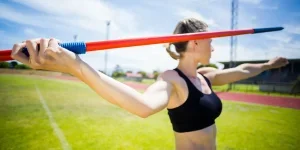Javelin throwing is a core part of track and field events, so choosing the right javelin for competitions is essential for athletes who want to perform well and hit their target. It may look like a spear, but a javelin is precision-engineered with specific materials, grip designs, and weight balance all taken into consideration.
Not all javelins are built the same, though, which is why it’s important that athletes choose one that’s suitable for their skill level. Keep reading to learn more about how to choose the right javelin for competitions.
Table of Contents
What is a javelin?
Global market value of track and field equipment
How popular is javelin throwing?
Choosing the right javelin
Conclusion
What is a javelin?
Before diving into the different types of javelins on the market, here is some information about what exactly a javelin is.
A javelin is a spear-like object that’s used in track and field events. It’s typically made from materials such as carbon fiber, fiberglass, or metal and measures between 2.2 and 2.7 meters. There’s a grip near the center of the javelin for control purposes too.
Athletes will launch the javelin as far as they can from a specific area, with the aim of achieving the longest distance while maintaining proper technique. All javelins are carefully regulated by World Athletics to ensure fairness within competitions, so there are rules to follow in the manufacturing process.
Global market value of track and field equipment
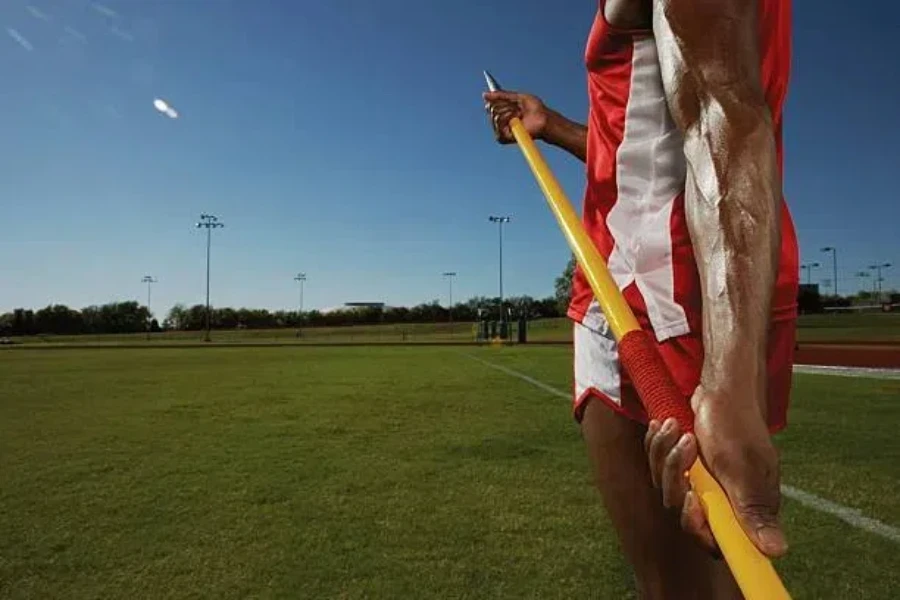
The demand for track and field equipment has grown substantially in recent years. This is down to a number of factors, such as equipment being more readily available for buyers due to e-commerce sales as well as track and field events being televised more regularly. Events like javelin, discus, and shot put require relatively little equipment to perform, but all of the equipment needs to meet certain standards and be made of high-quality materials in order for athletes to perform well.
By the end of 2023, the global market value of track and field equipment had reached USD 101 billion. This number is expected to grow at a compound annual growth rate (CAGR) of at least 6.96% between 2024 and 2031. That will bring the total value up to approximately USD 161.76 billion by 2031. All types of track and field equipment are included in this evaluation, and javelin is set to play a big role in sales.
How popular is javelin throwing?

Javelin is a core part of track and field events, but how popular is it? According to Google Ads, the art of “javelin” has an average monthly search volume of 246,000. The most searches come in March with 368,000 searches, or 13% of the total annual search volume. For the remainder of the year, searches for “javelin” remain steady, sitting between 165,000 and 246,000 per month.
The second highest search volume comes in February as well as in October and November, when searches reach 246,000 per month and make up 27% of total annual searches. This shows that javelin throwing is a popular sport throughout the year, and javelin equipment is always in high demand. In 2024, searches are higher due to the Paris Olympics, which are watched globally and bring in additional track and field viewers and potential buyers for track and field equipment.
Choosing the right javelin
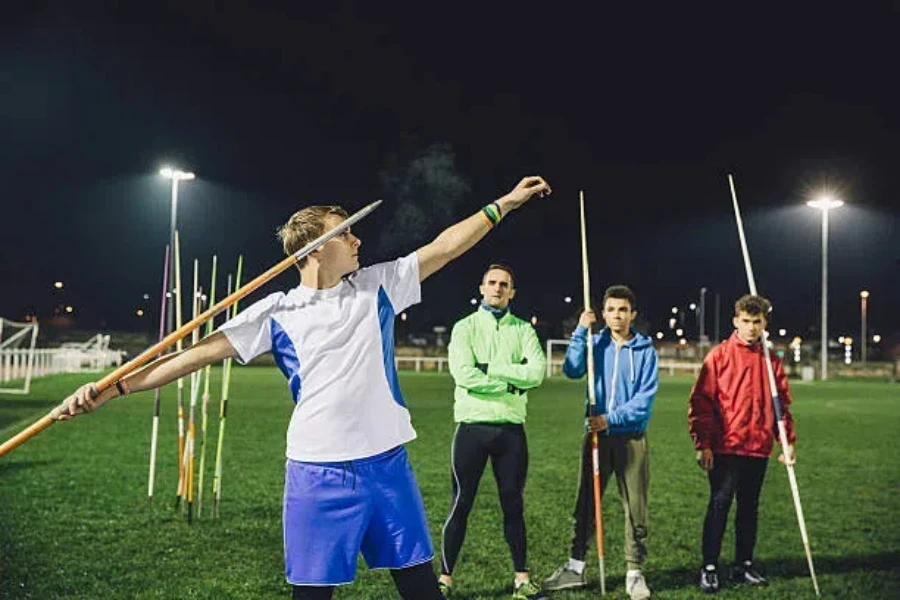
A javelin may look like a simple piece of equipment, but there are several important characteristics that should be considered. These characteristics need to align with the specific skill level and throwing technique of the individual, as well as meet competition-specific requirements.
Material
One of the biggest players when it comes to performance in javelin throwing is material. The different materials used can have a big effect on durability, feel, and overall performance. Whatever material is chosen should reflect the skill level of the individual and their competition goals. Here are the three javelin materials used:
- Carbon fiber javelins are used by advanced or professional throwers. They’re lighter and more flexible, which allows for greater control. Users will find that they may be able to reach longer distances with this material too due to the high-performance design.
- Fiberglass javelins offer throwers a balance between strength and flexibility. This means that they are useful for a range of skill levels as they provide good flight characteristics.
- Aluminum javelins are the most affordable and therefore the most popular among beginner and intermediate throwers. They’re known for their durability as well, which is important for beginners.
Length and weight
Two of the most important features of javelins are the length and weight. They can directly impact the flight and handling of the javelin, and must be within competition regulations. The length and weight can vary based on gender and competition level.
Senior-level competitors, for example, will require a javelin that’s around 800 grams and measures between 2.6 and 2.7 meters for men, and for women, it should weigh 600 grams and sit between 2.2 and 2.3 meters. This ensures that there is consistency and fairness in all competitions.
Heavier javelins require more strength and technique, so heavier throwers are needed. The length can affect the balance and aerodynamics of the javelin. If the javelin is longer, throwers will find that it has more stability in the air. Athletes should choose a javelin that meets regulations and that is adapted to their own needs.
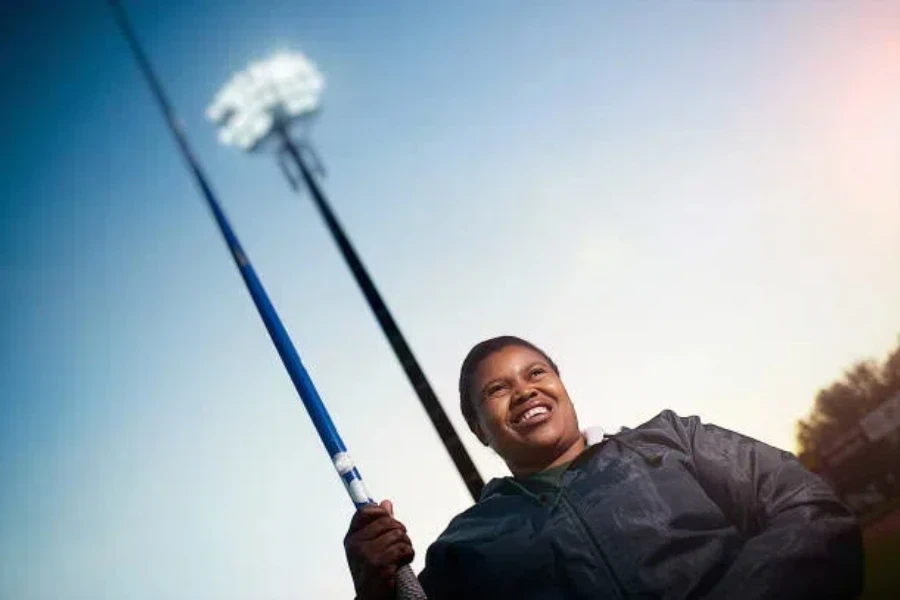
Grip
The javelin grip is another important feature that athletes will be looking at. It can greatly affect the athlete’s control and comfort during the throw. Javelin grips are typically made of synthetic materials or cord, both of which offer secure and comfortable holds. It’s located near the center of the javelin, and its texture and thickness can vary between models.
The grip should allow throwers to maintain consistent hand positioning over time and allow for necessary force without slipping. For more advanced athletes, having a grip that’s suitable for their hand size is key for performance and injury prevention, putting them at less of a disadvantage.
Aerodynamics
Javelins are carefully designed tools with aerodynamics in mind. The shape, surface features, and balance point all play a vital role in the performance of javelins. A well-built javelin will easily cut through the air with reduced air resistance, therefore enabling the thrower to achieve a longer distance. Javelins need to land tip-first into the ground, so making sure the weight distribution is correct is also key.
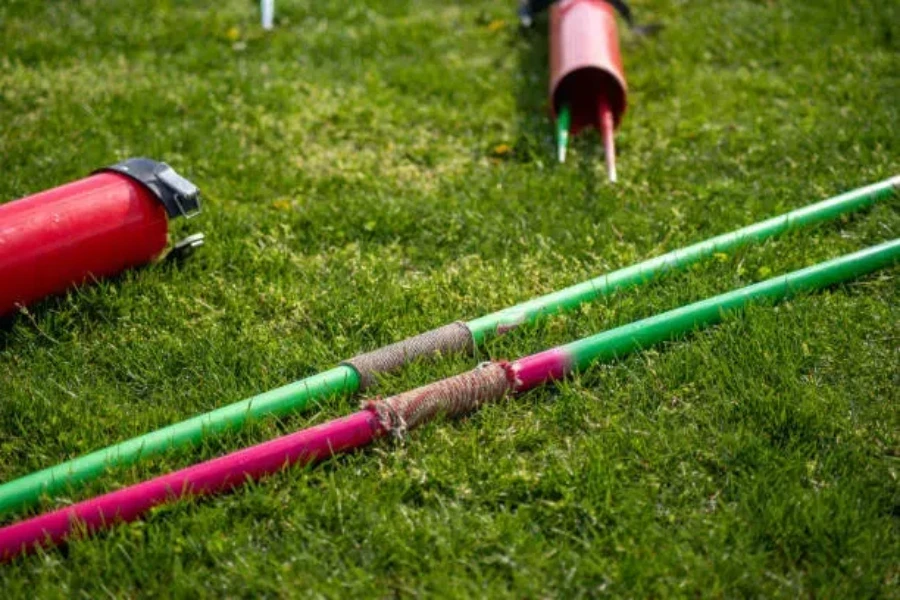
Balance point
An important factor that influences how the javelin behaves is the balance point. It’s located slightly in front of the grip and determines how the javelin feels in the hand and how stable it is in the air.
Balance points that are tip-heavy will fly with a lower trajectory and can be thrown further, but achieving this requires more control and precision. Javelins with balance points that are tail-heavy are easier to control and therefore more suitable for beginners since they provide a more stable flight path towards the target. Athletes need to determine the correct balance point for themselves.
Conclusion
Although javelins look like a simple piece of track and field equipment to use, there are a lot of factors that consumers will look at. Features such as the materials, length and weight, grip, aerodynamics, and the balance point are all equally important when it comes to overall performance. With track and field only growing in popularity, javelins are projected to increase in demand over the next several years globally.
